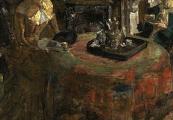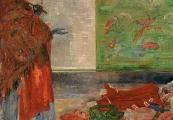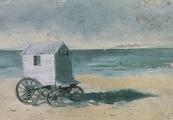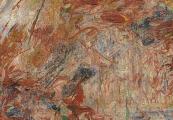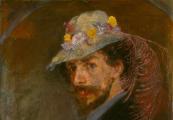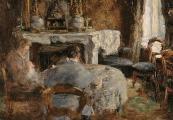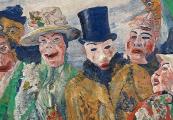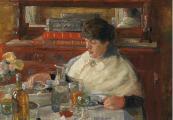This archived website ‘James Ensor. An online museum.’ is temporarily not being updated. Certain functionality (e.g. specific searches in the collection) may no longer be available. News updates about James Ensor will appear on vlaamsekunstcollectie.be. Questions about this website? Please contact us at info@vlaamsekunstcollectie.be.
Ensor as Painter
There are approximately 850 paintings known to be by the hand of James Ensor. From 1876 until 1883 and from 1889 until 1892, he was especially productive. After 1920 he worked with a renewed enthusiasm for 20 years. Between 1873 and 1941 not a year passed without him producing at least one painting.
From 1881 until his death, Ensor participated in exhibitions in which he presented his work to colleagues, critics and discerning admirers. Ensor sold little or nothing for twenty years. After 1900, he sold the greater part of his oeuvre to collectors who belonged to the public of the Antwerp exhibition association L’Art contemporain and the Brussels‘ Galerie Giroux.
In technical, iconographical and stylistic respects, Ensor‘s painting oeuvre is extraordinarily diverse. He places great importance, in opposition to what was at one time asserted, on the quality of the materials used and gladly tries out various types of equipment, materials and techniques.
Before 1887, Ensor often painted very informal, refined realistic studies, seascapes, landscapes, still lifes and modern-genre tableaux. Among these a few undisputed masterpieces are found such as Russian Music (1881), The Oyster-eater (1882) or the Portrait of Willy Finch (1882). In 1887, Ensor chose for a grotesque or satirical depiction of motifs for which he sought inspiration in the Bible, literature, history, contemporary social and artistic life, his personal life, the world of the carnival, commedia dell’arte and ballet. He does this in a contrast-rich and vivid colouration, at times in an expressive design, then at others in a naïve form. He paints but a handful of important landscapes. However, throughout his life Ensor painted a great number of still lifes. Through the introduction of masks, but also by means of a combination of trivial objects, these still lifes obtain a double entendre character.
Herwig Todts

